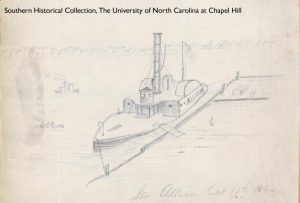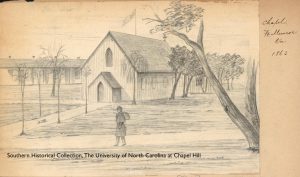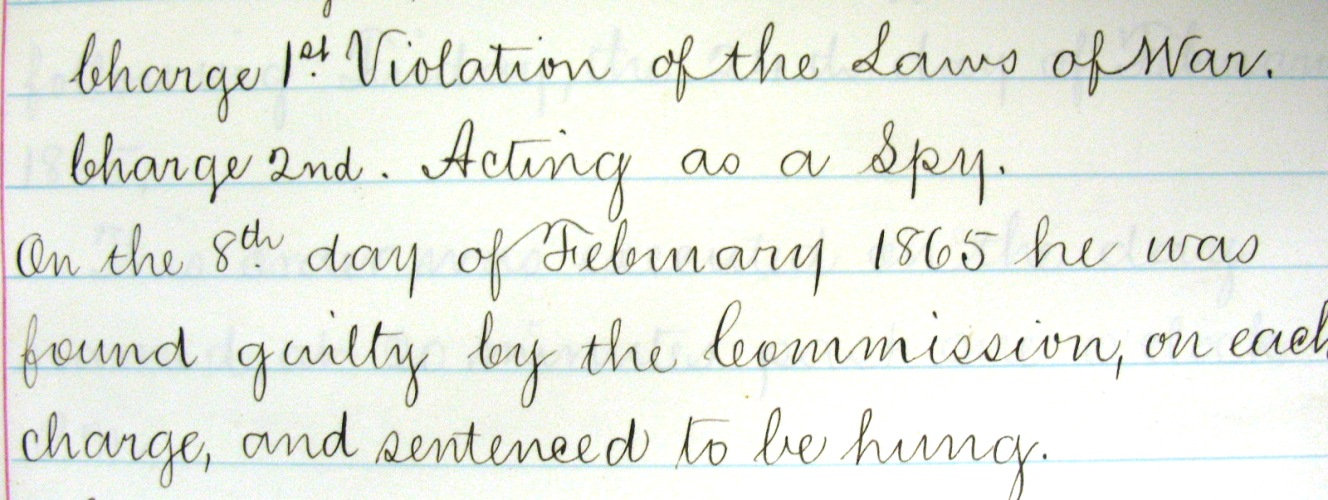Herbert Eugene Valentine (1841-1917) was a private in Company F of the 23rd Massachusetts Volunteers, who served in the United States Army between 1861 and 1864 in eastern Virginia, North Carolina, and South Carolina.
The SHC’s Herbert E. Valentine Papers contains a diary, pencil and watercolor sketches, correspondence, newspaper clippings, and maps, all contained in two manuscript volumes of Herbert E. Valentine. These volumes contain 184 sketches picturing towns, buildings, ships, bridges, fortifications, and everyday life at military bases. Valentine made birds eye view sketches of the towns in which he was stationed, as well as sketches of their principal buildings such as hospitals, churches, warehouses, and private residences that served as military command headquarters and as officers’ quarters. Locations with numerous sketches include Beaufort, Morehead City, and New Bern, N.C., and Hilton Head and Saint Helena Island, S.C. Seven color maps pertain to the operations of the 23rd Massachusetts Regiment in eastern North Carolina and Virginia.
We thought we’d share a few selections of these great Civil War sketches:







 On this date, forty four years ago, President Lyndon B. Johnson signed into law the “National Voting Rights Act of 1965.” The Act was intended to enforce the fifteenth amendment to the U.S. Constitution. It did so by outlawing disfranchisement practices adopted in many southern states after the Civil War, including literacy tests. Amazingly, the 1965 Act was ratified some 95 years after the fifteenth amendment was signed into law.
On this date, forty four years ago, President Lyndon B. Johnson signed into law the “National Voting Rights Act of 1965.” The Act was intended to enforce the fifteenth amendment to the U.S. Constitution. It did so by outlawing disfranchisement practices adopted in many southern states after the Civil War, including literacy tests. Amazingly, the 1965 Act was ratified some 95 years after the fifteenth amendment was signed into law.